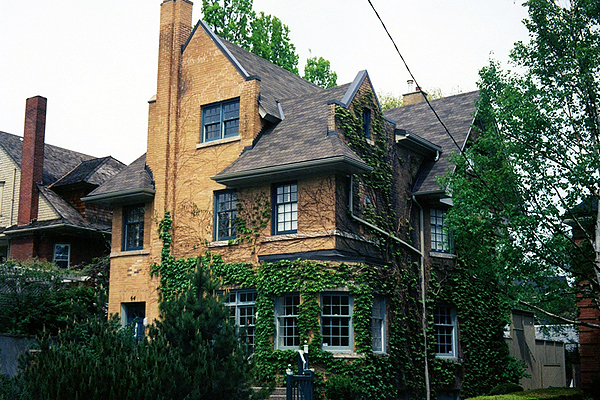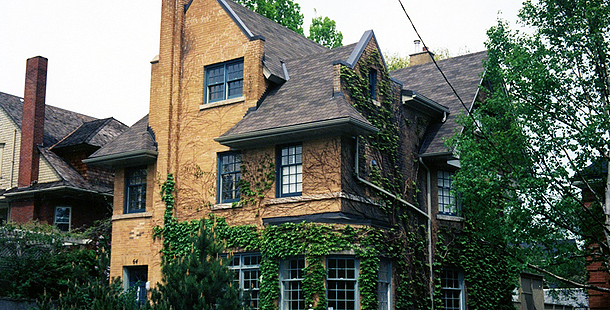WSIB, financial stability and home inspection all part of the research

SKY’S THE LIMIT when you’re roofing.
Ask Craig Bennett, deputy director of Avenue Road Roofing, about replacing your roof, and he’ll tell you it is akin to having to change the transmission in a car.
“It’s one of those necessary evils that people often aren’t tremendously excited about, but certainly it’s an investment that protects the biggest asset for most people, which is their home or their business,” he said.
Bennett has over 35 years experience in roofing, and has been at Avenue Road Roofing for 25 of them.
The biggest concern with the industry in recent years, he shares, is that consumers, whether business owners or homeowners, be aware of the potential contractor’s financial stability and insurance coverage.
“There’s almost this, I would call, an underground economy supported by suppliers that cater to that sort of industry,” he said. “The result is, unfortunately, for legitimate businesses, they spend a lot of time and money in their businesses to enforce safety in their businesses and be compliant with government regulations and try to offer meaningful warranties to their customers.”
Consumers should steer clear of contractors advertising on Kijiji and those that have a low overhead point. These companies tend to focus on consumers who seek out opportunities “to save a buck.”
Homeowners should do their due diligence in investigating whether or not a contractor has the current Workplace Safety and Insurance Board coverage, and are credentialed installers — a company that works with a specific manufacturer and install the product to meet their criteria.
Bennett has been called by customers looking to get an inspection on jobs done by these independent contractors, in order to get an approved renewal on their insurance policies.
That’s when the importance of finding a contractor in good financial standing is important.
“Many roofers will go under within a four to five-year period, because they haven’t calculated the direct cost of being in business,” he admitted.
That also includes if they’re up-to-date with their WSIB, as well as having all their workers certified in fall arrest.
“It’s one thing for somebody to say, ‘Yes, I have WSIB’, it’s now the responsibility of the homeowner to verify, to get written proof that a particular company has it, because under the new legislation, the homeowner can be viewed as a constructor,” Bennett said.
“If somebody happened to be, God forbid, hurt on somebody’s property, and had taken the word that the particular company had proper coverage in place, and an unfortunate accident took place, the homeowner could be held liable.”
One way for homeowners or business owners to do their due diligence is to check with the WSIB and find out whether a particular company’s account is in good standing. Bennett gave the example of one contractor being covered for painting, but not for roofing.
“Somebody can inadvertently take a cursory look at a document and think a company is covered, but they need to call and confirm that the company is up-to-date,” he said.
Once the research is done, homeowners now have to determine what the warning signs are on their homes, and whether or not they need to replace the shingles, slate tiles or copper flashing.
Shingles

The key to a long-lasting roof is first to inspect the attic to check for proper intake ventilation.
Bennett draws attention to older homes being built to perform a particular purpose. There wasn’t as much insulation used, gaps were left underneath roof boards to allow the house “to breath.”
But with newer, more modern homes, additions like spray foam installation and pot lights create new problems.
“What we see are homes with new doors and windows that are thermally efficient, high efficiency furnaces and often times there is more insulation,” he explained. “Those things are great for retaining heat, but if not addressed properly as building being a system, they pose problems.
“We go into attics, and we notice people have used blown insulation, but they have effectively blocked the soffits around the perimeter of the room and there is no fresh air coming into the attic to blow that hot air out through the roof vents.”
The result is shingles curling upwards, or clawing.
“These speak to conditions of super heating of the shingles as a result of a hot attic.”
Another problem is ice-damming. Southern Ontario faces 70 freeze-thaw cycles that affect the roof and its structure.
“It’s prudent to get an inspection from a certified contractor who can take photographs, document certain conditions and demonstrate to the homeowner what the plus or minus points are,” Bennett said.
A certified inspector can also point out other woes that afflict our home’s top. They can ensure that gutters are clean, flashing is sealed, plumber vents can breath, the integrity of chimneys is sound, and overhanging trees are adding to the problem.
There’s also the element of local fauna creating headaches — raccoons and squirrels included.
Flat roofs
A common trend with renovations or rebuilds is the use of flat roofs. These require inspections.
“It’s easy to see a curled shingle or animal damage, but when people look at a flat-roof system, they don’t know what to look for,” Bennett said.
Inspectors will know how to spot ailments like alligatoring — when asphalt has bubbled through the surface; windscour, where the gravel is dispersed and the felt is exposed; wrinkles and blisters in the bitumen; bleed out of the seams; dried out calking around wall flashings as well as the ponding of water.
Copper and slate roofing
One of the growing trends, and more eco-friendly roofing details is the use of slate tiles and copper finishes. Though it may be a more expensive investment, Bennett says it’s one of the most cost-effective solutions.
Slate roofs have been a “mainstay” in Toronto for over 100 years, and are common in midtown homes. Avenue Road Roofing, Bennett said, does “a fair bit of historic restoration”.
Problems posed to homeowners, who are interested in being period-correct with their abodes, is the rusting of non-galvanized nails.
“After a 100 some-odd years, you’re going to have damage to the product,” Bennett said. “The beautiful thing is they can be restored.”
Copper, which its rich orange sheen that oxidizes to a pleasant green, can last 40-50 additional years, but only if it’s maintained.
Within the roofing industry, specialized subcontractors are required for inspections.
“When it comes to the copper, or the leaded copper, which was common in those days, again you need a very specialized tradesperson who is proficient in replacing those roofs,” Bennett said.
Above all, consumers must do their research, much like buying a new car or investing in a large-scale renovation.
“I guess the underlying conversation point in all this is the homeowner, or the business owner, needs to put the time and effort into researching a contractor as they might for purchasing a new car or undergoing a major renovation on their home,” Bennett said. “One would really invest the time necessary in being confident in their purchase, and to understand why the price is the price.”

